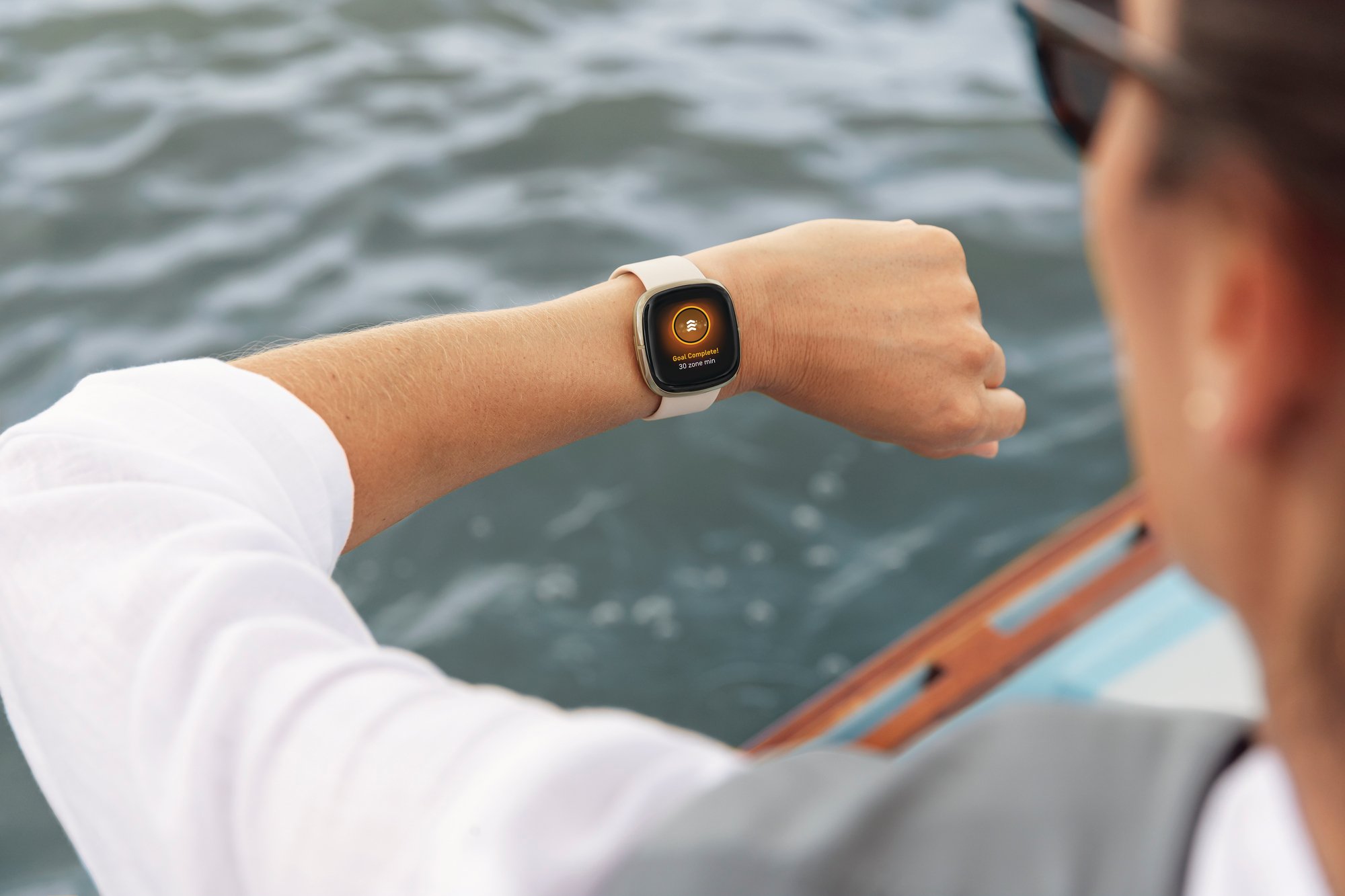The pieces of Fitbit's (FIT +0.00%) turnaround are falling into place. The wearables company has found success with its inexpensive Versa smartwatch, selling more than 1 million units within two months of launch. And its recently announced Charge 3 fitness tracker brings enough improvements to the table to potentially return that part of the business to growth.
But those expecting Fitbit's profitability to fully recover shouldn't get their hopes up. In the past, Fitbit produced gross margins of nearly 50% and operating margins in excess of 20%. Those days are probably over for good.

The Fitbit Versa smartwatch. Image source: Fitbit.
The downside of smartwatches
Smartwatches accounted for 55% of Fitbit's total revenue in the second quarter, up from 30% in the first quarter. The Versa, priced at $200, drove much of this growth.
But smartwatches are a double-edged sword for Fitbit. With sales of more basic fitness trackers slumping, becoming a major player in the smartwatch market is critical for the company. But these new products aren't nearly as profitable as Fitbit's bread-and-butter trackers.
Fitbit's gross margin was 39.8% in the second quarter, down 2.4 percentage points year over year and down more than 8 percentage points from its peak in 2015. Fitbit attributed the year-over-year decline to the increasing proportion of smartwatch sales.
Fitbit CFO William Zerella emphasized in the first-quarter earnings call that the company is more focused on increasing total gross profit, not gross margin. He expects gross margin to be under pressure for the rest of the year:
But I would just say again, directionally, and we've said this in the past, we see smartwatches basically driving our gross margins down through the balance of the year. Consensus models have margins in the 40% to 41%. And we think those margins are reasonable versus our current forecast.
The smartwatch market is only becoming more competitive, which will limit what kind of prices Fitbit will be able to charge. Apple is the 800-lb. gorilla, but other companies, including Fossil and Garmin, are pushing into the smartwatch market as well. If the smartwatch market ends up anything like the smartphone market, where Apple makes a lot of money and most others struggle to turn a profit, Fitbit will have a tough time avoiding further gross margin declines.
Heavy spending and fancy trackers
Another issue is spending. Developing smartwatches and other new products isn't cheap, and each new model needs to be a big enough improvement to both keep up with the competition and compel users to upgrade. Total operating expenses soared 73% in 2016 on a much smaller revenue increase. Costs have come down a bit since then, but not nearly enough to offset the decline in revenue and gross margin. Fitbit can't cut costs too much, especially in research and development, if it aims to keep up with its smartwatch competition.
During the first six months of 2018, operating expenses accounted for a whopping 76% of total revenue. That percentage should be lower for the full year, given that holiday sales are in the second half. But that's a deep hole that Fitbit needs to climb out of.
The Charge 3, which is not a true smartwatch but does have smartwatch-like features, is a significant upgrade over its predecessor. It features an OLED screen protected by Gorilla Glass 3, and it bumps the display size up by 40%. It's also water resistant up to 50 meters, a feature that was lacking in the Charge 2.
The Charge 3 goes for $150, the same price as the Charge 2. Given the new hardware features, it stands to reason that the Charge 3 will come with a lower gross margin. This is likely out of necessity -- Fitbit needs to both return its tracker business to growth and keep the price gap between the Charge 3 and the Versa big enough to avoid any cannibalization. The Charge 3 looks like it will be a successful product, but it probably won't help margins.
In its heyday, when it dominated a growing market for fitness trackers, Fitbit was wildly profitable. It had a first-mover advantage, and its brand had become synonymous with the entire product category. You didn't buy a fitness tracker, you bought a Fitbit.
Today, consumers are shifting to smartwatches, where Fitbit has no advantage. There's no good reason to expect Fitbit to be able to produce the kinds of profits it did in the past. That doesn't mean the company can't succeed, and it doesn't mean the stock can't make for a good investment. But as Fitbit's turnaround picks up steam, investors need to keep their expectations in check.





